
This is a tale of the raven, the crow. For most of my life, if I may borrow liberally from Edgar Allan Poe, my feelings about these corvids and their cousins could be summed up in a single word: nevermore. Nevermore would I see anything redeeming in these bulky, black, opportunistic creatures who scatter their smaller avian brothers and sisters to grab the tastiest morsels for themselves. Oh, smart no doubt, that was obvious, but using that intelligence as a robber. And that screeching! That a group of crows is called a murder, I found not at all surprising. Nevermore!
And so consider, if you will, my life in Ireland – land of green and rolling hills, land of fields afar and wide where graze sheep and cattle, land of music and craic (fun) – and land of the crow. Imagine in your mind’s eye that I have recently moved to the small hamlet of Corofin. I am out for a walk, excited to learn the contours of my new home. I hear them long before I see them, a squawking cacophony which stops me in my tracks. This is not one crow, not even 10. How many could there possibly be? I come upon a tree-lined section of the roadway and look up. There they are – 20, maybe 30, maybe more, perched in the branches, guarding nest after nest nestled in the crooks, winging in and out, spitting guano on the already-nearly-white sidewalk on which I dare not walk. It turns out that these corvids are as much a part of my welcoming committee as the good people, the shaggy cow, the horse who greets me in the field next door. Egads, I think, crows!
I wish I could tell you that in the time since, I’ve made my peace with these ubiquitous creatures. In fact, I have not. But I’m using this blog as a reason to explore whether I should be more generous toward them. My timely impetus is also propelled by a personal experience. My brother TJ (see blog about his visit here) is a remarkably gifted and occasionally quirky sculptor. Last month, he posted a photo of a recent work his Facebook page, a small carved ebony raven “on fern rock and slate,” as he described it. It was so intriguing, so nearly magical to me that it took my breath. I made what I thought was a throw-away comment, “I want it!” Merry Christmas, he wrote in reply. Even as we speak, it is making its way to me here in Ireland. Take that, Deborah, my corvid neighbors seemed to say. We’ll burrow our way into your good graces one way or the other!
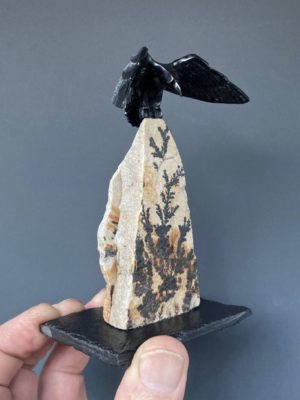
I have since learned so much that I did not know before about these black, feathered creatures (actually often midnight blue and purple). I learned that the crow and the raven are two of a number of birds in the corvid family. The small nearby rookery is populated primarily by jackdaws and rooks, considerably smaller than their cousin the raven. I learned that I need to give this family more credit, that they are a loyal bunch of mating birds with a reasoning capacity that rivals that of apes, dolphins and elephants. I’ve learned that they have a unique place in Irish mythology and lore. And I have friends here who feel a deep, almost primal appreciation for them that gives me pause for thought.
Here is a raven tale from County Sligo. A king has seven sons but wants a daughter. When the queen gives birth to a girl, he banishes his sons and they go to live in the forest. When the girl is older, her mother tells her about her brothers and she leaves to search for them. On finding them in their forest home, she stays and lives with them for many days. One day, she picks some magic yellow flowers which she presents to each brother. They eat them, turn into ravens and fly away. She returns home and after seven years, they return as well and take human shape. Their father welcomes them.
From Kilkenny, nearly as far south and east as Sligo is north and west, comes a similar story. In this iteration, 12 brothers are banished. Their sister finds them and hands each of them a flower bud, turning them into ravens. She cries as they leave her and a witch (always a witch!) tells her if she wants to see them again not to speak for seven years. Seven years on, the king is about to burn the girl at the stake because she refuses to speak. The raven brothers swoop in and return to human form. The girl starts to talk and the king spares her life.
(Just so you know, a number of crows just passed my window. Maybe I am finding favor with them.)
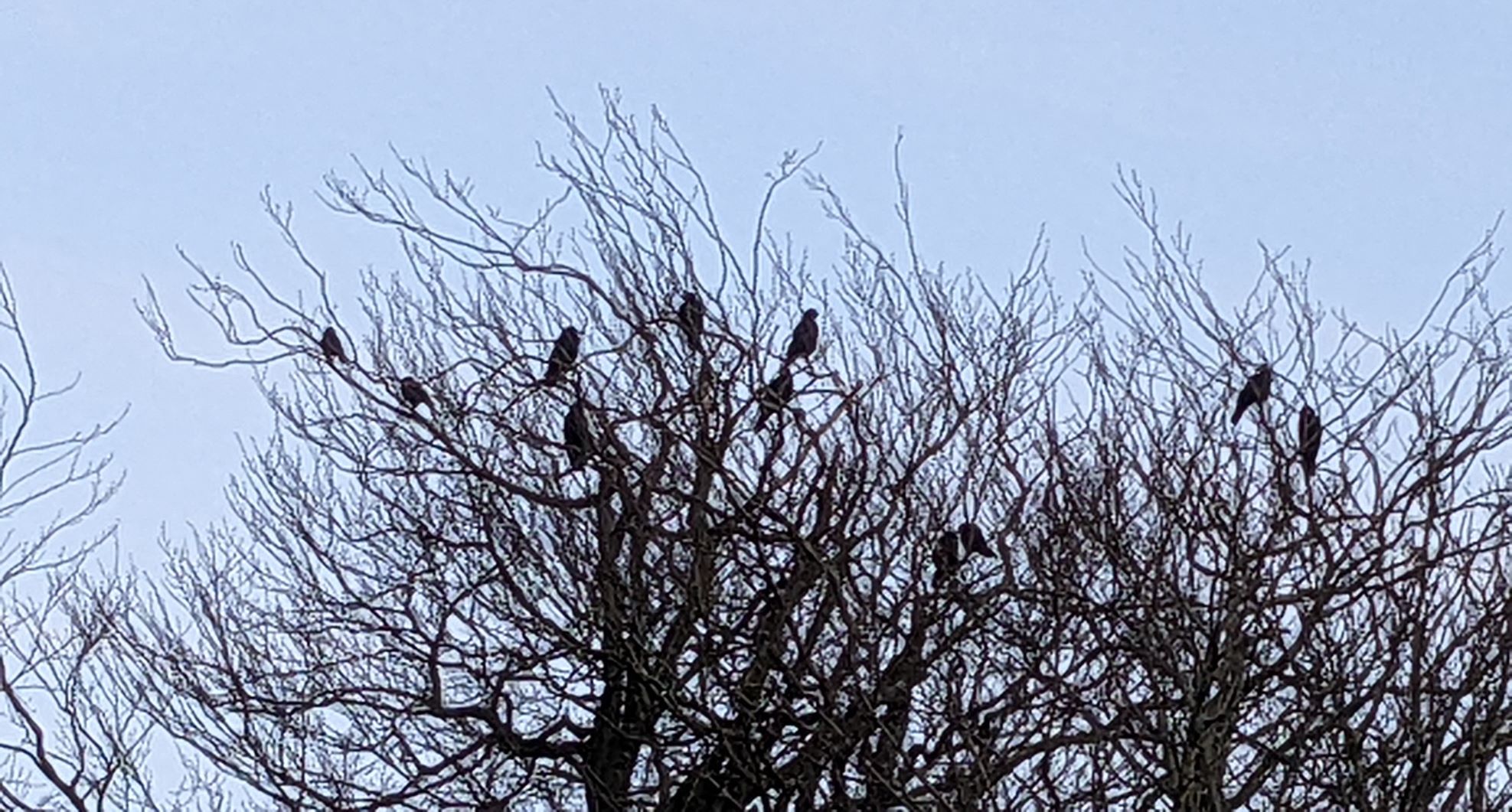
These are two of about a half dozen similar tales that I found on www.duchas.ie, indisputably my go-to place when I want to learn about the lore of Ireland. Here is found the repository of an oral history project the government of Ireland undertook in the 1930s. Schoolchildren from across the country were asked to sit down with a grandparent or an elderly community member and ask them about the stories and tales that made up their lives. I am too uninformed about the lore to read much into these tales of a girl and her brothers. I know that seven is a sacred number. I know that for thousands of years until the 17th century, Ireland was ruled by high kings and regional kings with warrior dispositions, and they wielded great power. But I also like the familial feel of these stories, of the love of a girl for her brothers and the brothers’ love for her in return. That these magical flowers turn them into ravens gives me a bit of heart. In these stories, the raven is not the black harbinger of death that many a mortal might conjure in his or her mind but a symbol of abiding affection.
Do not think for a moment, however, that we are to be spared that harbinger. Kings are not the only ones in Irish mythology with a warrior’s heart. Meet the Morrigan, a kickass Irish goddess who was not only a dab hand in battle but also had the gift of prophecy. She appears in the written mythological chronicles not infrequently, in fact so often that it is safe to say she held a place of some power in the pantheon. While she took a number of shapes in addition to her human form, she was often seen as a raven. Several times, she foresaw danger and, appearing in her crow or raven form, warned of what lay ahead. She had a particular relationship with Cu Chulainn (Coo Cullen), a mythical hero of such proportions that he lives in the hearts of the Irish people even today. In fact, a magnificent bronze statue depicting the death of Cu Chulainn stands in the General Post Office in Dublin, with a raven perched on the ravaged warrior’s shoulder – the Morrigan. It was said that only when his enemies saw the raven did they know he was dead. In some of the tales, she warns of impending battles, in others she declares her love of war and destruction. She is clever, she is battle-hard and she is not to be trifled with.
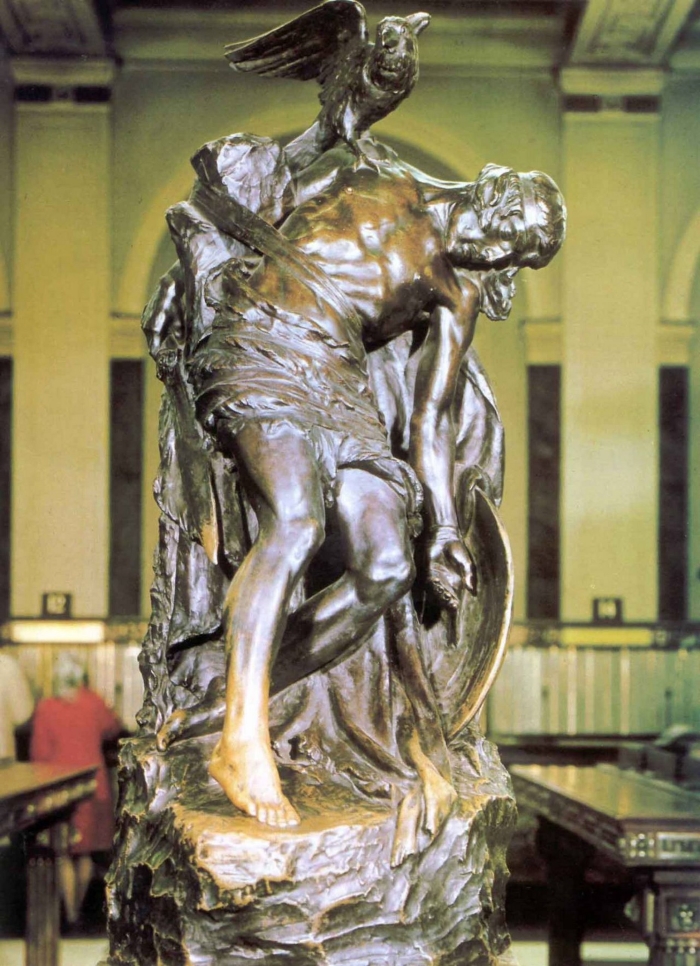
As an archetype, let alone as a spiritual force, the Morrigan poses such problems for me. Although few who know me would deny that I have my fiery side (much tamed though it is as I become older), I have been a lifelong pacifist. By that I don’t mean peace and love, man; I mean I believe that through negotiations and compromise undertaken by reasonable people, a path exists toward an avoidance of conflict. In this, I have always felt that women are poised by their very nature to be those negotiators. If more women were in positions of power, I believe, war and conflict would diminish demonstrably. The Morrigan reminds me that for all of women’s receptive and intuitive yin nature, we can not ignore the active and masculine yang that exists within. It’s a hard lesson for me, which is in no small part the reason that I view my Irish corvid neighbors with such skepticism. But I also remind myself that the mythology was written centuries after the fact by monastic monks, with all the worldview that entails, and so I choose to separate out a bit of chaff from the Morrigan’s wheat as a result.
I would be remiss if I did not tell you, as well, that I have friends here who have a deep connection to these birds. My friend Janet Buell (the very talented artist whose painting of a jackdaw is the lead image for this blog) tells me this: Just about every day, she puts out peanuts for her corvid brood. And every morning she wakes to find a lone rook perched on a tree in her back yard. “He’s the lookout. It’s like he is saying, ‘OK, guys, she’s up and about now.’ Before long, others come to join the lookout, waiting for the tasty morsels they know are coming. That’s just one of her stories about the wily, intelligent corvids she encounters. Another woman I know, a young friend from Ecuador who came to Ireland to go to graduate school, feels a deep affinity for the crow in particular. This is what she has to say. “I like crows because I see myself in them. They are often misunderstood. People think that they are bad luck or bad news bearers, but I think that they are just trying to communicate with us so that we can be aware or be prepared for what is about to come,” she said. “Crows are very mysterious creatures. They can team up with you as human and help you find understanding, awareness and strength for difficult times. Intelligent birds that team up with warriors.” Wise women’s words to ponder.
So now the blog is over, my writing complete. Do I feel any closer affinity for these avian neighbors of mine? Can I overcome my own built-in stereotypes and prejudices? Maybe. Maybe there is food enough here for a fine meal, to savor and relish on these long winter days. I will try. I promise I will try. Caw! Caw!
***
For those of you who might be intrigued by my brother’s work, find him under Thomas J. McDermott on Facebook, or visit his website, http://galleries.tjmcdermott.com/
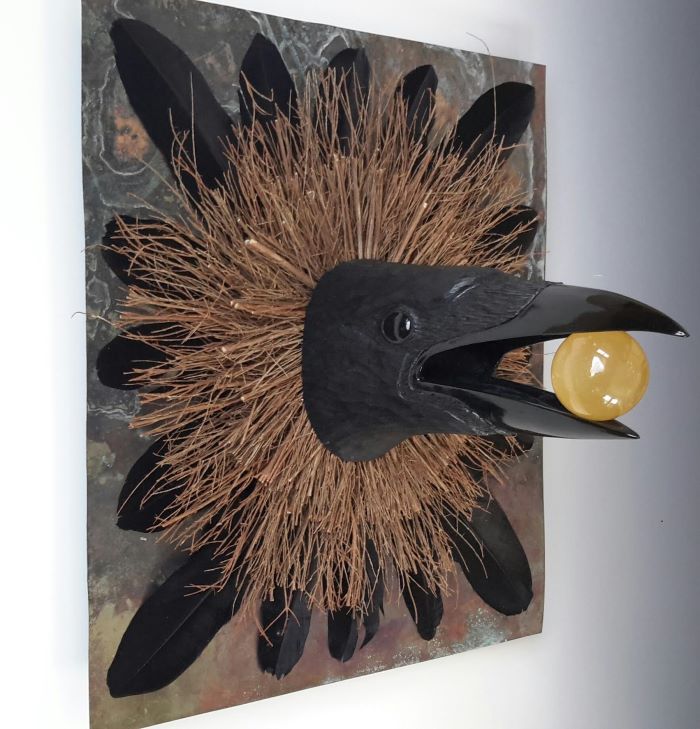
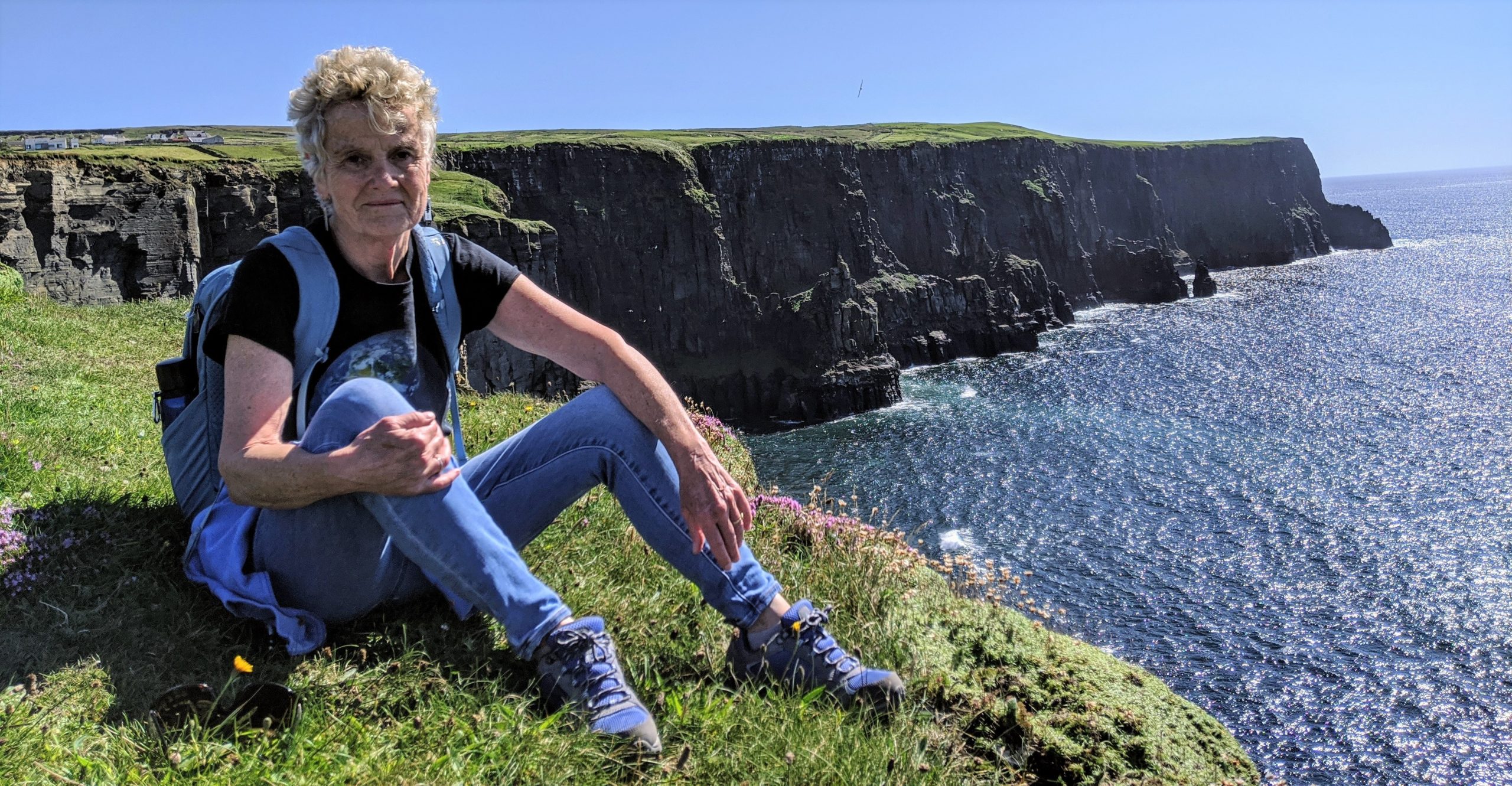
Reader Comments
Talented brother and sister!
I love my family or two of crows here. I talk to them and they answer!
Who knew there was so much to say about crows!!
Italians love their pigeons… Irish love their crows❤️
Crows were BJ’s special friends, ever since she was a child and some became family pets, even walking to school with her and her siblings. When she passed away, nearly 10 years ago now, the crow became the symbol of her life. She appears to me often, seemingly out of nowhere when I need her at most difficult times, reassuring me of her presence in my life. I’m sure one of your crows is her saying hi! Magical…..